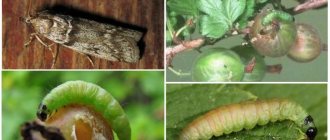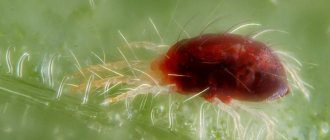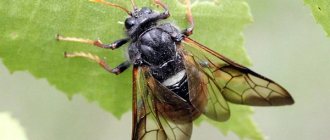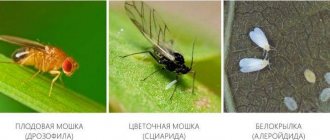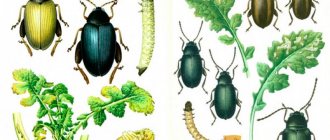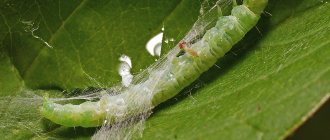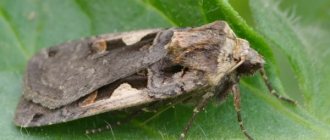Home Tips for summer residents
Almost every summer resident has currant bushes, but it is rarely possible to grow a rich harvest and keep the foliage healthy. The bud mite is the most common pest that attacks currants. It sucks the juice from the leaves, the bush begins to hurt and bears fruit poorly. But there are 9 effective ways to get rid of this mite without harming the plant, which even a novice gardener can handle.
- 2 Use a gas burner
- 3 Laundry soap
- 4 Planting onions and garlic
- 5 Mixture of ash and tobacco
- 6 Walnut leaves
- 7 Remove affected buds
- 8 Pour boiling water over the bush
- 9 Use chemicals
Onion and garlic infusion
The kidney mite cannot tolerate the smell of garlic or onions, so to combat the pest, you can prepare a tincture according to the following recipe:
- take 100 g of peeled onion and garlic, chop on a fine grater;
- put the pulp in a 10 liter bucket of water;
- mix everything thoroughly until smooth, cover with a lid and leave for a day;
- strain the infusion through doubled gauze.
Spray the foliage, branches and tree trunks with the prepared solution, starting in early spring. This will destroy the larvae that survived the winter.
This garlic and onion infusion is also effective against aphids and herbivorous caterpillars.
Description
The body of the kidney mite is worm-shaped and white. Females are about 0.3 mm long, and males are shorter - about 0.15 mm. The tick's head ends with a mouthpart similar to a wedge-shaped proboscis. The insect has two pairs of legs with feathery bristles. Tick larvae are elongated-oval, light in color.
The bud mite parasitizes black currants and gooseberries, but sometimes damages red and white currants. Ticks overwinter inside the kidneys, and one kidney can house from three to eight thousand individuals, and in large kidneys - from 8 to 30 thousand ticks. Buds occupied by a large number of pests appear larger and more convex. At the beginning of spring, they swell to the size of a pea and look like tiny heads of cabbage with deformed leaves sticking out. But those buds in which there are few ticks do not differ in appearance from healthy ones, and this makes it difficult to fight the pest.
Ticks spread both with planting material and with the help of wind, birds and other insects. Female ticks live from 20 to 45 days, each of them lays from 5 to 100 eggs. Eggs develop from one to two weeks, and larvae from one week to a month. The first generation of mites appears at the end of currant flowering. In one season, a tick produces five to six generations of offspring: two in spring and three in summer and autumn.
- Moths: how to get rid of them, how to deal with the pest (remedies)
Use a gas burner
Another effective method is fire treatment. You need to point the gas burner at the bush, keeping a distance of 10 cm from the branches. Movements should be fast so as not to burn the bush, and directed from top to bottom.
Healthy buds have dense scales that protect them from fire. Buds affected by pests, on the contrary, are open and porous, so the heat will penetrate inside and destroy the bud mite along with the larvae.
Signs of currant infection with bud mite
In addition to swollen, enlarged buds, tick infestation is indicated by other signs that appear at different times of the year.
Thus, in the spring, infection is indicated by unevenly developing shoots with deformed leaves. Some of the round buds do not produce leaves or shoots at all. The bush has a minimal number of flower clusters.
In the summer, infected bushes can be distinguished by their appearance: they develop worse and unevenly. Some of the shoots are twisted, there are few fruits, they fall off while still green. In August, some of the buds begin to increase in size and become round.
Buds of different sizes on bare currant bushes in autumn and winter signal an existing pest problem.
If you do not take action, you can lose not only the berry harvest, but also the plant.
Laundry soap
Soap can destroy kidney mites due to its high alkali content.
Preparation of soap solution:
- rub 200 g of soap, dissolve in 0.5 liters of water and leave overnight;
- In the morning, add 150 ml of sunflower oil to the mass, stir until smooth;
- Dissolve the resulting mixture in 10 liters of water, pour it into a sprayer and begin processing the bushes.
Spraying should be started within an hour after the final stage of preparing the solution. Later, the soap emulsion will begin to separate.
Methods of pest control
To combat bud mite on currants, different methods are used or alternated.
Agrotechnical methods
If there are only a few swollen buds on the plant, you just need to tear them off and burn them. You can use pruning shears to cut out sections of branches with affected buds and also eliminate them. If almost the entire bush is affected by a mite, then it will not be possible to completely cure it; all shoots must be cut off at the root. The plant will sprout new growth, free from the pest, since mites can only live in the buds; they are not found in the ground. Drastic pruning helps not only to destroy the pest, but also to rejuvenate the plant at the same time. In this way, especially valuable varieties of currants can be saved.
Chemical means
Agrochemical treatment is carried out when the currants throw out flowers. At this time, the pests are just moving to new buds and becoming unprotected. To get rid of bud mites on currants, you will need acaricidal or insectoacaricidal agents, for example, Actellik, Kinmins, Nissoran, Apollo, Vertimek, Endidor, Kontos, etc.
In total, 2 or 3 sprayings are necessary with an interval of 1.5 weeks. The air temperature during treatments should not be lower than 5°C; at lower temperatures, frosts and rains, spraying is not carried out.
Organophosphorus systemic acaricides, for example, Bi-58, Dimetrin, Phosfamide, Nitrafen, Rogor-S, San-Mite, etc., are more effective, but have a big drawback - they can be used only after all the berries have been collected.
Biological drugs
To destroy mites in the kidneys, you can use Fitoverm, Actofit, Bitoxibacillin. To achieve the effect, you will need to carry out at least 3 treatments with an interval of 1 week. An important condition is that the drugs will be effective only at elevated temperatures (15-19ºC). In cold, windy weather, which often happens in early spring, their effectiveness decreases sharply.
Biological products need to be alternated. They are compatible with biofungicides in tank mixes. However, before preparing them, you must first check all drugs for compatibility, especially previously unused ones. Methods of dilution and use, dosage are usually indicated on the packaging.
We recommend reading
How to fight aphids on currants and how to treat the bushes
Symptoms of common currant diseases and how to combat them
Methods and rules for pest control on currants
Ways to combat glassware on currants
Folk remedies
One of the most effective methods by which you can fight bud mites on currants is dousing the bushes with hot water. The procedure is carried out early in the spring, certainly before the buds begin to bloom on the bush. To properly process it you need to: boil water, pour it into a metal watering can with a spray nozzle. While near the currants, measure the temperature of the liquid; it should be within 80°C. If the water is colder, you may not get the desired effect, but if it is higher, you can burn the buds and bark, which will further damage the plant. Then pour a watering can on the entire bush, every branch of it: hot water will kill the pests inside the buds. For 1 adult powerful bush, 1 bucket of water should be consumed.
You can try treating currants with infusions from:
- Garlic: chop 0.2 kg of garlic, pour 10 liters of water into the pulp and leave to steep for 2-3 hours.
- Mustard: dissolve 0.2 kg of mustard powder in a bucket, leave for 8 hours.
- Dandelions: take 0.2 kg of roots and 50 g of leaves of the plant, grind them in a meat grinder. Pour a bucket of water, stir and after 2 hours the infusion will be ready.
All infusions must be filtered before pouring into the sprayer so as not to clog the filter with small particles.
A lime-sulfur solution (colloidal sulfur) is also suitable for treating bushes against ticks. Before flowering begins, they are treated with 2% liquid, after it ends - with 1%, that is, take 20 and 10 g per bucket of water. The air temperature at the time of processing should not be below 20°C.
Pour boiling water over the bush
This method is similar to treating bushes with a gas burner, but in this case boiling water is used.
The process of destroying the kidney mite is as follows. Tie the bush branches into a bundle with twine, without squeezing them too tightly. Pour boiling water into a watering can with a sprayer, then raise the watering can 2 cm from the top of the bush and water the branches.
This treatment should be carried out in early spring before the buds open. On average, one bush should require a whole bucket of water.
Signs of pest damage
At different times of the year, seasonal signs of infection can be recognized on currants.
In spring and summer
The leaves of annual shoots acquire light shades, their surface becomes rougher, and at the top they become smaller and curly. Shoot growth stops. Multiple thin shoots of a reddish color appear, similar in shape to a broom, which do not bloom or bear fruit, but consume a lot of nutrients and gradually deplete the plant. The etiology of this pathological process is fungal or viral invasion.
The disease is incurable and eventually the currant bush dies. The currant mite is the carrier of pathogenic microflora.
in autumn
The buds affected by the mite increase in volume, as if they are swollen, and look like a torn head of cabbage. They contain thousands of females, ready to lay eggs with the onset of spring.
Use chemicals
If there are too many mites and you don’t want to bother with folk remedies, you can buy chemicals.
For processing bushes in the spring, “Forbid 4F”, “Vertimek”, “Akktelik”, “Endidor” are suitable. After harvesting, it is allowed to use “Bi-58”, “Rogor-S”, “San-Mite”, “Phosfamide”.
From the beginning of spring until the end of flowering, shrubs can be treated with Karbofos. It is applied both to the branches and to the soil around the plant.
Another effective drug is Actofit. Treatment is carried out up to two times per season. After spraying, within 4 hours the ticks are paralyzed and they gradually die. The drug does not cause addiction among pests.
There are also drugs that are safe for humans - biocaricides, they are made on the basis of fungi and bacteria. But there is one drawback - they are effective only at temperatures not lower than +15...+19°C, so they cannot be used in early spring. Such drugs include “Fitoferm”, “Boverin”, “Bikol”.
The bud mite can not only damage the bush, but also lead to its death. Because of this, it should not be allowed to reproduce, since it is more difficult to cope with a large population. Chemicals are as effective as possible, but if you have the strength to treat shrubs regularly, then you can easily cope with these pests using safe folk remedies.
- Author: Inna Kiseleva
Rate this article:
- 5
- 4
- 3
- 2
- 1
(13 votes, average: 4.7 out of 5)
Share with your friends!
Who is the currant mite and why is it dangerous?
photo from plagiser.com
The currant bud mite belongs to the group of four-legged mites, which has over 4 thousand species. All these small pests, whose body length does not exceed 0.5 mm (and bud pests are even smaller: 0.2 mm), pose a serious threat to plants.
They not only suck out the vital juices from representatives of the flora, but also cause changes in the shape of their cells and organs, and infect them with dangerous infections, of which they are carriers.
Most of these arachnids are very sensitive to low air humidity and high temperatures, so they live inside buds, various shoot formations or in galls.
Galls are pathological formations in the form of growths on the leaves, shoots and roots of plants, caused by the action of viruses, bacteria, fungi, but more often by mites or nematodes.
The bud mite prefers black currant bushes, but also settles on white and red ones. Gooseberry bushes also suffer from the pest.
Infection occurs through seedlings and equipment infected with parasites. Ticks are carried by the wind and carried by birds or other insects.
Female ticks overwinter in the kidneys, and as the weather warms, they lay eggs, from which larvae soon emerge. One kidney can contain over 3 thousand individuals! So the threat to the bush is quite real.
When currants begin to bloom, the affected buds begin to wither and the mites leave them. Pests look for new shelter in the axils of leaves on young shoots.
Penetrating into them, females begin to feed and reproduce. Before autumn, at least three generations of mites are born in the kidneys. Their common house swells and increases in size. If the pest spreads strongly, up to 80% of the currant buds may be affected by winter.
